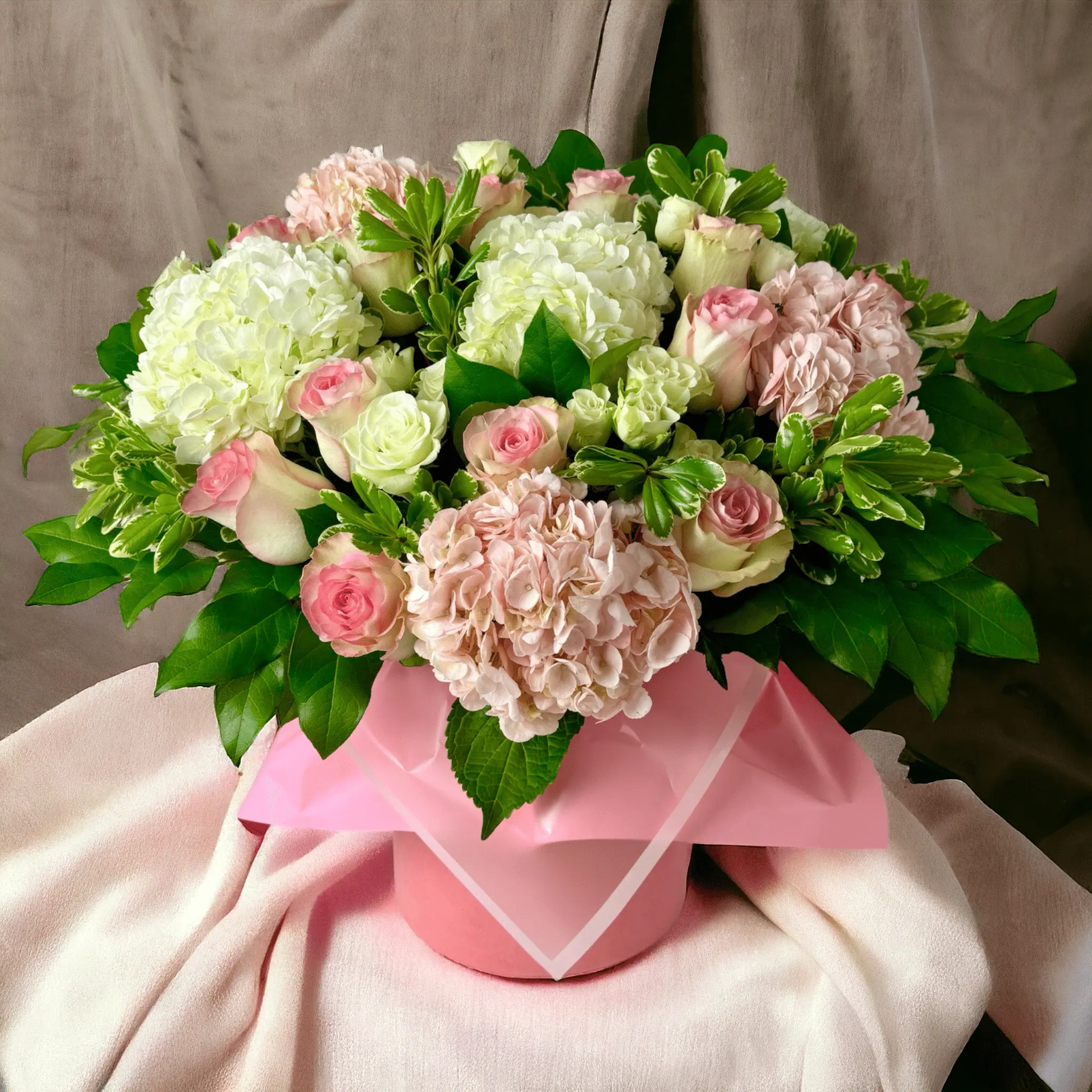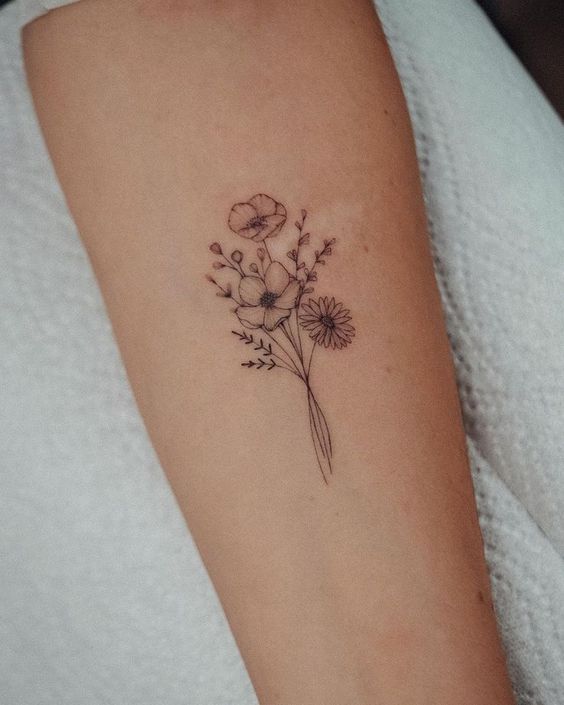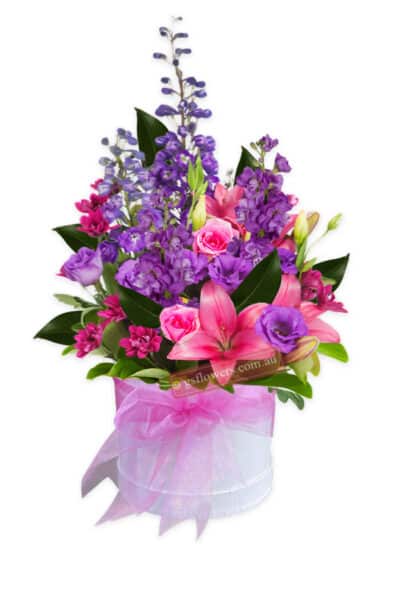The Timeless Allure of Fresh Flowers: More Than Just a Pretty Face

Fresh flowers. They evoke emotions, brighten spaces, and add a touch of natural beauty to our lives. From the humble daisy to the majestic orchid, flowers have captivated humanity for centuries, serving as symbols of love, remembrance, celebration, and solace. But beyond their aesthetic appeal, fresh flowers offer a myriad of benefits, contributing to our well-being in ways we might not even realize.
This article delves into the multifaceted world of fresh flowers, exploring their history, the science behind their appeal, the diverse ways they are used, and how to care for them to maximize their beauty and longevity.
A Blooming History: Flowers Through the Ages
The story of our relationship with flowers stretches back millennia. Archaeological evidence suggests that Neanderthals may have buried their dead with flowers, hinting at an early appreciation for their symbolic power. In ancient civilizations, flowers played significant roles in religious ceremonies, medicinal practices, and artistic expression.
Ancient Egypt: Flowers, particularly lotuses and papyrus blossoms, were integral to Egyptian culture. They were used in religious rituals, as offerings to the gods, and as decorative elements in tombs and temples. The lotus, symbolizing rebirth and regeneration, was especially revered.
Ancient Greece and Rome: Flowers were associated with deities and used in festivals and celebrations. Roses were linked to Aphrodite, the goddess of love, and were often used in wedding ceremonies and as gifts for loved ones. Wreaths and garlands of flowers were worn as symbols of victory and honor.

Medieval Europe: Flowers were cultivated in monasteries and used for medicinal purposes. Herbal remedies often incorporated flowers like lavender, chamomile, and rosemary. During the Middle Ages, the language of flowers, known as floriography, emerged, allowing people to communicate secret messages through specific flower arrangements.

The Victorian Era: The Victorian era saw the language of flowers reach its peak. Social etiquette dictated that certain emotions could only be expressed through floral arrangements. Each flower held a specific meaning, allowing individuals to convey nuanced messages of love, friendship, regret, or even disapproval.
Throughout history, flowers have not only been admired for their beauty but have also been recognized for their medicinal and symbolic significance. Their presence has enriched human culture and continues to do so today.
The Science of Flowers: Why They Make Us Feel Good

The positive impact of flowers on our mood and well-being is not just anecdotal; scientific research supports the notion that flowers have a profound effect on our brains and emotions.
Improved Mood: Studies have shown that being around flowers can trigger the release of dopamine, a neurotransmitter associated with pleasure and happiness. The vibrant colors and delicate fragrances of flowers can stimulate our senses and create a sense of joy and contentment.
Reduced Stress: Research indicates that flowers can lower stress levels by reducing cortisol, the stress hormone. Simply looking at flowers can have a calming effect, promoting relaxation and reducing feelings of anxiety.
Increased Creativity: Flowers can inspire creativity and enhance productivity. Their beauty and natural forms can stimulate the imagination and provide a sense of tranquility, which can be conducive to creative thinking.
Enhanced Social Connections: Giving and receiving flowers can strengthen social bonds and foster feelings of connection. Flowers are a thoughtful way to express gratitude, appreciation, or sympathy, and they can help to build and maintain relationships.
Improved Memory: Studies have suggested that the presence of flowers can improve memory and cognitive function. The visual and olfactory stimulation provided by flowers may help to enhance memory recall and improve overall cognitive performance.
The science behind the appeal of flowers is complex and multifaceted, but it is clear that they have a powerful and positive impact on our mental and emotional well-being.
The Versatile Uses of Fresh Flowers: From Celebrations to Healing
Fresh flowers are incredibly versatile and can be used in a wide variety of settings and for numerous purposes.
Celebrations: Flowers are an essential part of many celebrations, including weddings, birthdays, anniversaries, and graduations. They add beauty, elegance, and a touch of festivity to any occasion.
Gifts: Flowers are a classic and timeless gift that can express a wide range of emotions. They are a thoughtful way to show someone you care, offer congratulations, or express sympathy.
Decoration: Flowers can transform any space, adding color, texture, and fragrance. They can be used to decorate homes, offices, restaurants, and event venues.
Memorials: Flowers are often used to honor and remember loved ones who have passed away. They provide comfort and solace during times of grief and serve as a symbol of remembrance.
Healing: Flowers have been used for centuries for their medicinal properties. Certain flowers, such as chamomile and lavender, have calming and soothing effects and can be used in aromatherapy and herbal remedies.
Culinary Uses: Some flowers, such as roses, violets, and nasturtiums, are edible and can be used to add flavor and color to salads, desserts, and other dishes.
The versatility of fresh flowers makes them a valuable and cherished part of our lives.
Caring for Your Fresh Flowers: Maximizing Beauty and Longevity
To ensure that your fresh flowers last as long as possible, it is important to provide them with proper care.
Choose Fresh Flowers: When selecting flowers, look for stems that are firm and straight, petals that are vibrant and unblemished, and leaves that are green and healthy. Avoid flowers that are wilted, bruised, or have brown spots.
Prepare the Vase: Clean the vase thoroughly with soap and water to remove any bacteria that could shorten the lifespan of the flowers.
Cut the Stems: Use a sharp knife or floral shears to cut the stems at an angle. This will allow the flowers to absorb water more easily. Recut the stems every few days to maintain optimal water absorption.
Remove Lower Leaves: Remove any leaves that will be submerged in water. These leaves can rot and contaminate the water, shortening the lifespan of the flowers.
Use Flower Food: Flower food contains nutrients and antibacterial agents that help to keep the water clean and provide the flowers with the nourishment they need to thrive. Follow the instructions on the flower food packet.
Change the Water Regularly: Change the water in the vase every one to two days. This will help to prevent bacterial growth and keep the flowers hydrated.
Avoid Direct Sunlight and Heat: Keep the flowers away from direct sunlight and heat sources, as these can cause them to wilt prematurely.
Consider Refrigeration: If you want to prolong the lifespan of your flowers, you can refrigerate them overnight. Wrap the flowers in damp paper towels and place them in a plastic bag before refrigerating.
By following these simple tips, you can help your fresh flowers last longer and enjoy their beauty for days to come.
FAQ: Common Questions About Fresh Flowers
What is the best way to choose fresh flowers? Look for flowers with firm stems, vibrant petals, and healthy leaves. Avoid flowers that are wilted, bruised, or have brown spots.
How often should I change the water in the vase? Change the water every one to two days to prevent bacterial growth and keep the flowers hydrated.
What is flower food and why should I use it? Flower food contains nutrients and antibacterial agents that help to keep the water clean and provide the flowers with the nourishment they need to thrive.
Can I revive wilted flowers? Sometimes you can revive wilted flowers by recutting the stems at an angle and placing them in a vase of fresh, cold water. You can also try submerging the entire flower head in water for a few minutes.
Are some flowers poisonous? Yes, some flowers are poisonous. It is important to keep poisonous flowers away from children and pets. If you are unsure whether a flower is poisonous, it is best to err on the side of caution.
How long will fresh flowers last? The lifespan of fresh flowers varies depending on the type of flower and how well they are cared for. Some flowers, such as carnations and chrysanthemums, can last for up to two weeks, while others, such as tulips and lilies, may only last for a few days.
Conclusion: A Lasting Impression
Fresh flowers are more than just a decorative element; they are a powerful symbol of beauty, emotion, and connection. From their rich history to the science behind their appeal, flowers have played a significant role in human culture and well-being. Whether used to celebrate a special occasion, express heartfelt emotions, or simply brighten a space, fresh flowers have a unique ability to uplift our spirits and enrich our lives. By understanding the science behind their allure and providing them with proper care, we can appreciate the timeless beauty of fresh flowers and enjoy their positive impact for days to come. So, embrace the power of flowers, and let their beauty bloom in your life.


